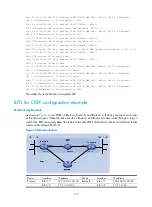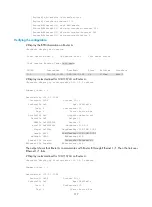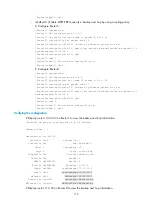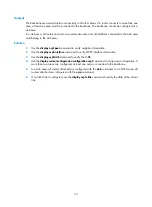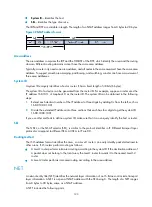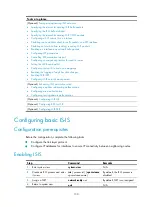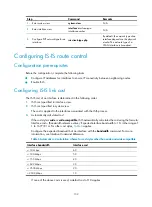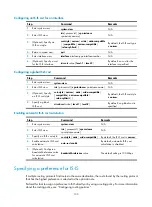
128
A CSNP describes the summary of all LSPs for LSDB synchronization between neighboring routers. On
broadcast networks, CSNPs are sent by the DIS periodically (every 10 seconds by default). On
point-to-point networks, CSNPs are sent only during the first adjacency establishment.
A PSNP only contains the sequence numbers of one or multiple latest received LSPs. It can acknowledge
multiple LSPs at one time. When LSDBs are not synchronized, a PSNP is used to request missing LSPs from
a neighbor.
CLV
The variable fields of PDU comprise multiple Code-Length-Value (CLV) triplets.
Figure 37
CLV format
shows that different PDUs contain different CLVs. Codes 1 through 10 are defined in ISO 10589
(code 3 and 5 are not shown in the table), and others are defined in RFC 1195.
Table 5
CLV codes and PDU types
CLV Code
Name
PDU Type
1
Area Addresses
IIH, LSP
2
IS Neighbors (LSP)
LSP
4
Partition Designated Level 2 IS
L2 LSP
6
IS Neighbors (MAC Address)
LAN IIH
7
IS Neighbors (SNPA Address)
LAN IIH
8 Padding
IIH
9 LSP
Entries
SNP
10
Authentication Information
IIH, LSP, SNP
128
IP Internal Reachability Information
LSP
129
Protocols Supported
IIH, LSP
130
IP External Reachability Information
L2 LSP
131
Inter-Domain Routing Protocol Information
L2 LSP
132
IP Interface Address
IIH, LSP
Protocols and standards
•
ISO 10589 ISO IS-IS Routing Protocol
•
ISO 9542 ES-IS Routing Protocol
•
ISO 8348/Ad2 Network Services Access Points
•
RFC 1195,
Use of OSI IS-IS for Routing in TCP/IP and Dual Environments
•
RFC 2763,
Dynamic Hostname Exchange Mechanism for IS-IS


